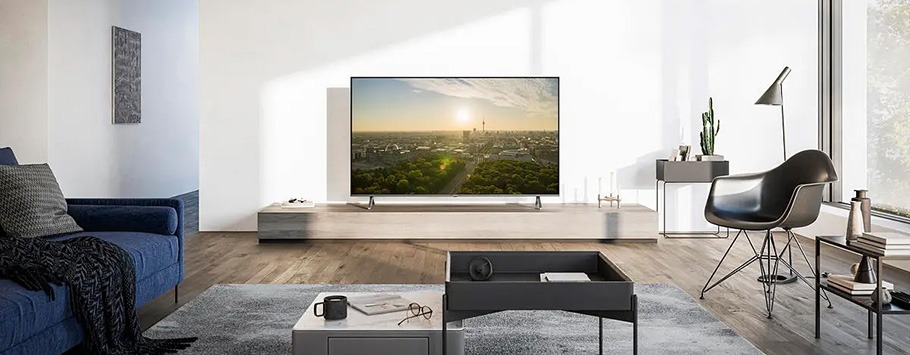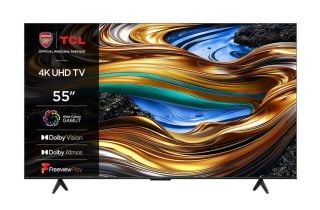4K TVs
Step into incredible detail with 4K TVs, offering four times the resolution of Full HD for sharper, clearer images. Whether you're watching movies, sports, or gaming, 4K delivers lifelike picture quality with rich colours and crisp contrast. Enjoy a more immersive viewing experience with ultra-high definition and smart features that bring your entertainment to life. Upgrade to 4K and see what you've been missing.
Popular 4K TV Brands


4K TVs

 Delivery usually 3 to 4 weeks
2 year warranty
0% interest for 4 months
Delivery usually 3 to 4 weeks
2 year warranty
0% interest for 4 months
4K Televisions
Elevate your TV viewing experience with 4K technology. A 4K TV boasts around 3840 x 2160 pixels, providing crisper visuals than HD TVs. Tailored for 4K content, our range of 4K televisions deliver lifelike visuals, especially on larger screens. Benefit from 4K resolution on streaming platforms, and even regular HD content is enhanced with 4K upscaling for greater clarity. The future of TV is undoubtedly 4K.
4K TVs are a pinnacle of modern home entertainment, offering four times the image quality of Full HD. Whether you're upgrading or adding a secondary screen, 4K TVs exceed the resolution of standard HD, resulting in sharper and more intricate visuals for an enriched viewing experience.
If you’re looking for a new 4K TV, we provide an array of versatile finance choices to help you manage expenses over time. Take your pick from our selection of buy now, pay later deals or opt for convenient pay monthly plans. Explore the full range of TV deals with free UK delivery available at Peter Tyson, a reliable retailer with a storied 57-year history in the trade.
Not all TVs are capable of handling 4K content. To enjoy 4K resolution, a TV must have 4K Ultra High Definition (UHD) capabilities, which means it can display a resolution of 3840 by 2160 pixels. Many modern TVs, especially those manufactured in recent years, have this support but older or budget-friendly models may only support lower resolutions like Full HD (1080p).
In order to actually enjoy 4K content on your TV, you'll also need more than just a 4K television. Most modern streaming devices are 4K-capable, but it's advisable to verify this before purchasing one. Similarly, if you want to enjoy the superior picture and sound of 4K UHD Blu-ray discs, a 4K Ultra HD Blu-ray player is necessary.
To ensure a high-quality 4K experience, you should use a 4K-compatible HDMI cable. While HDMI 2.0 cables can handle 4K at 60Hz, HDMI 2.1 cables support 4K at 120Hz. However, it's essential to note that both the TV and the source device need to have HDMI 2.1 ports to take full advantage of this capability.
Lastly, a robust internet connection is crucial for streaming 4K content, as it requires significantly more bandwidth compared to lower resolutions. Therefore, the quality of your 4K experience may depend on the capability of your internet connection to handle the extra load from 4K streaming, especially when multiple internet activities are occurring simultaneously in your household.
Determining the best size for a 4K TV involves several considerations. The most crucial factor is the viewing distance; essentially, how far you'll be sitting away from the TV. For 4K TVs, you'll want to sit closer than you would with a 1080p TV. A standard guideline suggests that your viewing distance should be around 1.5 times the diagonal size of the TV.
Additionally, take into account the size of the room where the TV will be placed. A larger room can accommodate a larger TV, creating a more immersive viewing experience. However, in smaller rooms, an excessively large TV might overpower the space.
As a rough estimate, many people find 55 inch to 65 inch 4K TVs to be a popular choice for their living rooms. This size strikes a balance between screen size and affordability. For more extensive living areas or home theatres, larger TVs like 75 inch or even 85 inch models can be more suitable.
The lifespan of a 4K TV can vary depending on factors such as usage, brand and model. While there isn't a fixed expiration date for these TVs, you can expect a 4K TV to last anywhere from 7 to 10 years.
It's worth noting that many modern TVs tend to encounter issues, if any, within the first couple of years of usage. These issues are usually covered by warranties, and manufacturers optimise their failure rates to minimise early failures. After this initial period, TVs often perform well for several years.
Smart TV features, which can become outdated or buggy after 2-3 years, may affect the TV's overall performance. To address this, you might need to switch to using external streaming devices like Chromecast, Apple TV or Nvidia Shield.
